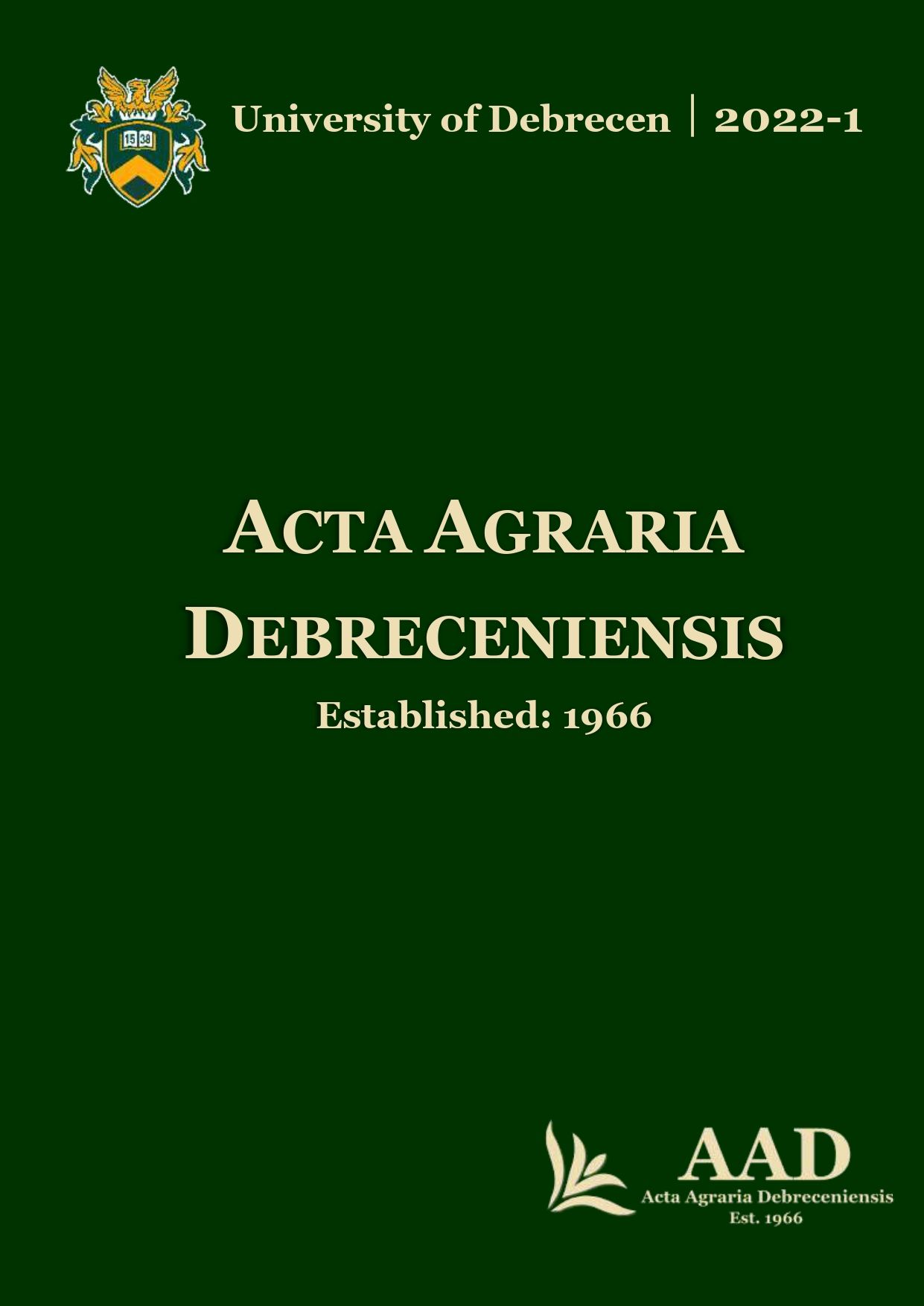Evaluation of the role of common vetch (Vicia sativa L.) green manure in crop rotations
Authors
View
Keywords
License
Copyright (c) 2022 by the Author(s)

This work is licensed under a Creative Commons Attribution 4.0 International License.
How To Cite
Accepted 2022-04-05
Published 2022-05-26
Abstract
Common vetch (Vicia sativa L.) is an annual legume, grown as green manure provide rapid soil cover, can increase soil moisture and organic matter content and reduce soil erosion during fall. During the fallow period, legumes grown as catch crops are known by releasing large amounts of mineral nitrogen (N) for the subsequent crop. By taking advantage of these benefits, it is possible to increase the yield of the next crop in an environmentally friendly and sustainable way. The goal of this study was to determine the value of common vetch as a green manure, considering its effect on soil conditions and the yield of next crops. We examined three different common vetch seed rate as a green manure in a crop rotation with triticale, oat and corn. Next to the green manured treatments, we used fertilized and bare fallow control treatment for comparison. In our study we evaluated the aboveground biomass weight of spring vetch green manure and its effect on the moisture content of the soil. We examined the green manure’s effect on the next crops plant height and yield. We found that the moisture content of the green manured plots was significantly higher during summer drought. On the green manured plots, 37.9% higher triticale yield, 50% higher oat yield and 44% higher corn yield were measured compared to the control plots. The insertion of spring vetch green manuring into crop rotations could be a good alternative to sustainable nutrient replenishment methods. It can be used to reduce the input needs of farming, reduce carbon footprint, contribute to the protection of soils and increase the organic matter content of the soil.
References
- Biederbeck, V.O. (1990): Sustainable crop production in the Canadian Prairies. In Conservation Tillage. Proceedings of Great Plains Conservation Tillage Symposium, Great Plains Agricultural Council Bulletin 131. p. 291–305.
- Campbell, C.A.–Schnitzer, M.–Lafond, G.P.–Zentner, R.P.–Knipfel, J.E. (1991): Thirty-year crop rotations and management practices effects on soil and amino nitrogen. Soil Science Society of America Journal 55. p. 739–745.
- Couëdel, A.–Alletto, L.–Tribouillois, H.–Justes, É. (2018): Cover crop crucifer-legume mixtures provide effective nitrate catch crop and nitrogen green manure ecosystem services. Agriculture, Ecosystem and Environment. 254. p. 50–59.
- Francis, C.M.–Enneking, D.–Abd El Moneim, A. (1999): When and where will vetches have an impact as grain legumes? In: Knight, R. (ed.) Linking Research and Marketing Opportunities for Pulses in the 21st Century. Proceedings of theThird International Food LegumeResearch Conference, Adelaide 1997. Current Plant Science and Biotechnology in Agriculture. Vol. 34. Kluwer Academic Publishers, Dordrecht/Boston/London, p. 671–683.
- Hargrove, W.L. (1986): Winter legumes as a nitrgoen source for no-till grain sorhum. Agronomy Journal. 78. p. 70–74.
- Justes, E. (2017): Cover Crops for Sustainable Farming. Springer, Netherlands
- Kramberger, B.–Gselman, A.–Janzekovic, M.–Kaligaric, M.–Bracko, B. (2009): Effects of cover crops on soil mineral nitrogen and on the yield and nitrogen content of corn. European Journal of Agronomy, 31. p. 103–109.
- Nemecek, T.–von Richthofen, J.S.–Dubois, G.–Casta, P.–Charles, R.–Pahl, H. (2008): Environmental impacts of introducing grain legumes into European crop rotations. European Journal of Agronomy, 28. p. 380–393.
- Ozpinar, S. (2009): Tillage and cover crop effects on corn yield and soil nitrogen. Bulgarian Journal of Agricultural Science, 15. p. 533–543.
- Sainju, U.M.–Singh, B.P. (1997): Winter cover crops for sustainable agricultural systems. Influence on soil properties, water quality and crop yields. Horticultural Science, 32. p. 21–28.
- Szabóné, Cs.K. (2003): Tavaszi bükköny nemesítése. In: Iszályné Tóth, J.: A kisvárdai növénynemesítés története. Jubileumi Kiadvány, Nyíregyháza. p. 117–126.
- Szabóné, Cs.K. (2010): Tavaszi bükköny (Vicia sativa L.) In: Gondola I. (szerk.) Az alternatív növények szerepe az Észak-alföldi Régióban. Nyíregyháza: DE Agrár- és Műszaki Tudományok Centrum Kutató központja, p. 48–49.
- Tonitto, C.–David, M.B.–Drinkwater, L.E. (2006): Replacing bare fallows with cover crops in fertilizer-intensive cropping systems: a meta-analysis of crop yield and N dynamics. Agriculture, Ecosystems and Environment, 112. p. 58–72.
- Touchton, J.T.–Rickerl, D.H.–Walker, R.H.–Snipes, C.E. (1984): Winter legumes as a nitrogen source for no-tillage corn. Soil Tillage Research. 4. p. 391–401.
- Unger, P.W.–Vigil, M.F. (1998): Cover crop effects on soil water relationships. Soil and Water Conservation. 53. 3. p. 200–207.
- Uzun, A.–Bilgili. U.–Sinicik. M.–Acikgoz. E. (2004): Effects of seeding rates on yield and yield components of Hungarian vetch (Vicia pannonica Crantz.). Turkish Journal of Agriculture and Forestry, 28. p. 179–182.
- Vágó, M. (1981): Tavaszi bükköny. In Szabó, I. (szerk): A szántóföldi növények vetőmagtermesztése és fajtahasználata. Mezőgazdasági Kiadó, Budapest. p. 439–443.
- Wright, A.T. (1990): Yield effect of pulses on subsequent cereal crops in the northern prairies. Canadian Journal of Plant Science 70. p. 1023–1032.

 https://doi.org/10.34101/actaagrar/1/10364
https://doi.org/10.34101/actaagrar/1/10364